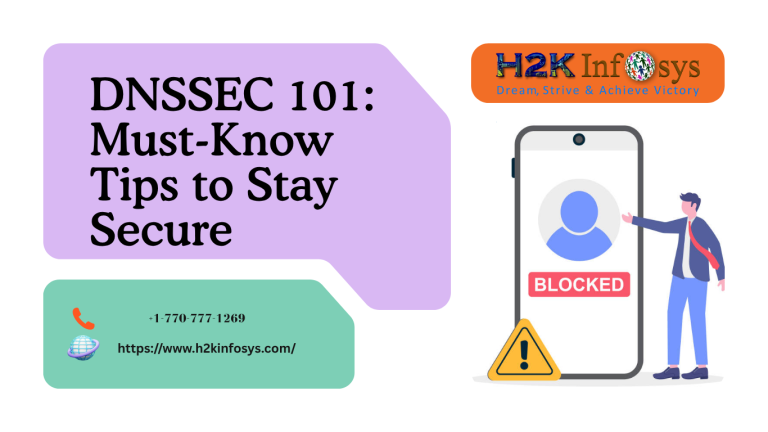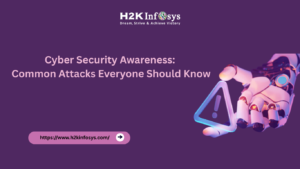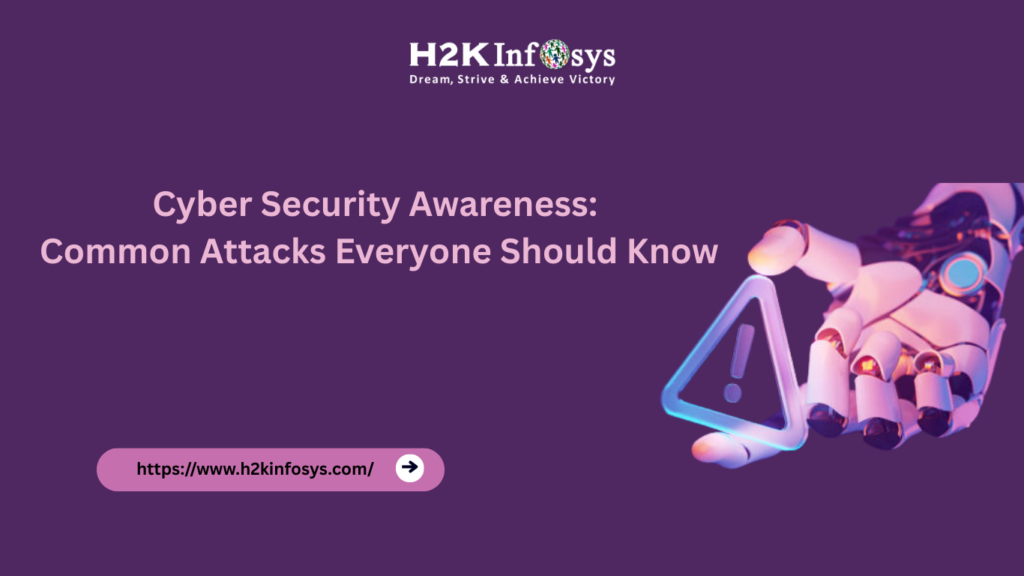Introduction:
Every time you type a web address like h2kinfosys.com, your browser uses the Domain Name System (DNS) to find the server behind that name. DNS is essentially the Internet’s phonebook. But here’s the problem: traditional DNS doesn’t verify whether the information it receives is legitimate.
This means attackers can trick you into visiting malicious websites, intercept your data, or reroute your email without you realizing it. That’s where DNSSEC Domain Name System Security Extensions come in.
For anyone pursuing a career through Cybersecurity training and placement, understanding is a must. It’s a security protocol that protects DNS from being tampered with. If you’re learning through cyber security training and job placement, online classes in cyber security, or even taking a cyber security analyst training online course, It will likely be part of your curriculum and for good reason.
1. What is DNSSEC, and How Does It Improve Cyber security?
It is a technology that adds a critical Cyber security layer to DNS lookups. It doesn’t encrypt DNS data, but it ensures that the information you receive is authentic and hasn’t been altered in transit.
When a DNS query is made, it allows the server to sign its response using cryptographic keys. These signatures are verified by the client (or resolver), ensuring data integrity and authenticity.
For example, if you’re on a banking website and it is enabled, it guarantees that the website you’re visiting is the legitimate one, not a fake version created by an attacker. In the realm of cyber security, such verification is invaluable.
Whether you’re learning basic concepts or advanced networking in a cyber security course with placement, It provides the perfect case study of real-world Cyber security implementation.
Why Traditional DNS Is a Weak Point
Traditional DNS cannot verify the authenticity of the DNS records it receives. This makes it a target-rich environment for attackers.
Without DNSSEC, cybercriminals can:
- Redirect users to phishing sites using DNS spoofing
- Inject malicious IP addresses into the cache via cache poisoning
- Launch man-in-the-middle attacks to intercept credentials
- Hijack domains and control the flow of traffic
For example, in 2019, a global DNS hijacking campaign targeted government and telecom domains. These attacks succeeded largely due to the absence of DNSSEC. Incidents like these underline the need for DNSSEC in any robust Cyber security strategy.
That’s why cyber security training and job placement programs at top institutes like H2K Infosys emphasize their course modules.

How DNSSEC Works: A Visual Explanation
Understanding is easier when you break it into steps:
Step 1: Key Generation
Each DNS zone generates cryptographic keys:
- ZSK (Zone Signing Key) signs DNS records
- KSK (Key Signing Key) signs the ZSK
Step 2: Digital Signatures
Every DNS record is signed, and these digital signatures are stored in RRSIG records.
Step 3: Chain of Trust
The public keys are stored in DNSKEY records. Parent zones validate child zones using Delegation Signer (DS) records, creating a chain of trust up to the root zone.
Step 4: Validation
When a user’s resolver checks a domain, it verifies the DNS record’s digital signature using these public keys.
Hands-on implementation is typically covered in cyber security analyst training online programs, where learners simulate domain attacks and deploy DNSSEC as a countermeasure.
DNSSEC in Real-World Cyber security Use Cases
DNSSEC is already adopted across critical industries:
- Government Websites (.gov) – To prevent traffic redirection and election interference
- Banking & Finance – To protect DNS queries for sensitive transactions
- Healthcare – To secure patient portals and prevent data theft
Sectors that rely on public trust and data confidentiality often mandate DNSSEC. This is why it’s included in advanced Cyber security labs and projects during cyber security training and placement programs.
If your goal is to become a network Cyber security analyst or engineer, real-world DNSSEC implementation is a portfolio-worthy skill.
What Threats Does DNSSEC Protect Against?
Here’s a breakdown of attacks that helps prevent:
| Threat Type | How it Helps |
| Cache Poisoning | Verifies response authenticity |
| DNS Spoofing | Detects forged DNS records |
| Man-in-the-Middle Attacks | Blocks tampered DNS data |
| Phishing | Ensures traffic isn’t redirected to fake domains |
| Domain Hijacking | Secures ownership validation in DNS |
From preventing ransomware attacks to stopping identity theft, it is a powerful shield. That’s why top cyber security course with placement programs integrate it into their course assessments.
DNSSEC Implementation Challenges and How Training Solves Them
Even though it is powerful, it’s not always easy to implement:
- Key Management: Keys must be rotated securely and frequently
- Configuration Errors: A single misstep can break domain resolution
- Parent Zone Coordination: Requires interaction with registrars
That’s why Cyber security courses at H2K Infosys don’t just teach theory. They walk you through real DNSSEC deployment, step-by-step, using modern tools like BIND, Unbound, and DNSViz.
Through guided instruction and labs in online classes cyber security, you’ll gain confidence in handling these complexities.
Step-by-Step Guide: How to Configure DNSSEC
Here’s a basic walkthrough for learners:
- Generate Keys – Use tools like dnssec-keygen
- Sign the Zone – Add RRSIG records
- Publish DNSKEY and DS Records – For resolver validation
- Test with Dig – dig +dnssec example.com
- Monitor and Rotate Keys Regularly
In a live classroom or self-paced cyber security training and job placement course, these steps are covered with examples, Code snippets, and validation exercises.
Hands-On DNSSEC Projects for Cyber security Learners
Project-based learning is the best way to master it. Try these:
- Deploy DNSSEC on a test domain
- Simulate a DNS spoofing attack and block it using DNSSEC
- Build a DNSSEC health checker to monitor domains
- Automate key rotation scripts for domain zones
These projects are often required capstone activities in a structured cyber security training and placement program at H2K Infosys.
DNSSEC and Cyber security Career Paths
Employers look for DNSSEC knowledge in these roles:
- Network Security Engineers – Secure DNS infrastructure
- Cyber security Analysts – Detect and stop DNS-based attacks
- Incident Response Teams – Investigate DNS logs and anomalies
- Security Architects – Integrate DNSSEC into broader Cyber security models
Adding DNSSEC to your resume sets you apart during job placements and interviews after completing a Cyber security course with placement.

DNSSEC in Industry Certifications and Training Standards
Certifications like:
- CompTIA Security+
- Certified Ethical Hacker (CEH)
- CISSP
All include related questions or topics. So, if you’re planning to certify after your cyber security analyst training online, DNSSEC familiarity boosts your exam performance and professional confidence.
Conclusion: Why it is a Critical Cyber security Asset
It may not be flashy like firewalls or antivirus tools, but it’s a silent warrior that stops cyber threats at the domain level. In today’s world, where every click matters, it is a must-learn for anyone serious about cyber security.
Key Takeaways:
- It adds authenticity to DNS responses using cryptographic signatures
- It stops phishing, spoofing, and DNS hijacking
- It is used across the government, finance, and healthcare industries
- Learning it boosts your skills, especially in cyber security training and job placement programs
- Practical knowledge is valued in certifications and high-demand job roles
Secure Your Future with DNSSEC and Cyber security Skills
Get hands-on training in and other critical skills with H2K Infosys’ Cyber security training and placement program.
Prepare for real-world job roles, certifications, and build a career-ready portfolio in cyber security.


























